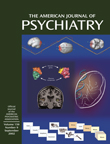Dementia: Management of Behavioural and Psychological Symptoms
On November 25, 1901, Auguste D. Alzheimer’s now famous first case was admitted to a hospital in Frankfurt. Her presenting problem wasn’t cognitive deficit but a cluster of psychiatric symptoms that included unpredictable and challenging behavior, auditory hallucinations, and paranoia. Over the following century, psychiatrists and neurologists with an interest in Alzheimer’s disease somehow fostered a preoccupation with the neuropathology, neurochemistry, and molecular biology of impaired cognition that pushed study of the more psychological and psychopathological aspects of the disorder into the background. Most recently, the advent of the cholinesterase inhibitors has led to an unfortunate increase in the categorization of individuals with dementia in terms of their Mini-Mental State Examination (MMSE) score. For example, in the United Kingdom, access to these drugs is currently rationed on the basis of “guidance” from a government body that recommends stopping prescription when the MMSE score drops below 12.
Through all of this, a huge, invisible army of Alzheimer’s disease patients and their informal and professional caregivers have struggled with problems that are often only indirectly related to cognitive deficit. What makes life difficult for the caregivers isn’t the fact that their husband or father can’t remember the date or the names of grandchildren. Rather, it is the problems that are considered by this book. Psychosis, depression, and aspects of behavior that arise out of agitation would probably be the simplest way to describe what the authors call behavioral and psychological symptoms.
The book begins with an explanation of the methodologies used to identify and measure such symptoms in patients with dementia. The most widely used scales are reproduced in full in the text, there are helpful pointers toward which instrument to use for a particular target behavior or patient group, and the coverage of scales is comprehensive. Reading about some of the less well-known of these scales taught me an important lesson. To name a scale the Caretaker Obstreperous Behavior Rating Assessment shows just how dangerous the attraction of a catchy acronym can be. You can see why they did it—but Drachman and colleagues must flinch every time they see their adjective in print.
This book provides a comprehensive and authoritative but, above all, balanced account of the strategies that have been used to manage distressing and challenging behaviors in dementia together with pertinent reviews of the evidence base for each. Strategically, the chapters considering pharmacological management are placed at the end of the book. To reach them, the reader has to pass accounts of behavioral and psychological therapies, interventions aimed at and delivered through caregivers, and alternative therapies.
My guess is that the book will work for different readers in a variety of ways. Colleagues already open to the use of nondrug interventions in the first line of management of these problems will be delighted to find everything they could possibly want to know presented in a convincing and readable format within a single volume. More narrow-minded practitioners who rely solely on psychopharmacology to sort out their patients’ problems will find the information they need to minimize iatrogenic damage. (The secret is to start with the lowest available dose and not go above 1 mg/day of risperidone or 5 mg/day of olanzapine.) I hope that even hardened prescribers will dip into some of the earlier chapters and at least examine the evidence for the efficacy of the alternatives.
It would be good to see a copy of this book in the office of every care facility with resident dementia patients. Even if they don’t read it from cover to cover, nursing and occupational therapy staff as well as family caregivers would find useful reference information here. Everyone in old age psychiatry knows of the Newcastle group’s reputation for research excellence. Here is a rather special example of how such a command of the research field can lead to clear guidance on how we can provide what is really most likely to help our patients and their caregivers. I predict classic status.



